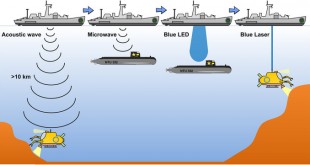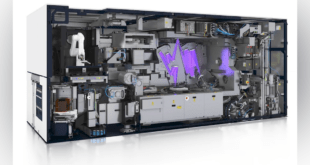Artificial Intelligence promises huge benefits to the world but lacks the proper infrastructure for implementation. AI infrastructure today is either too expensive, too slow, too hot or far too power hungry to be sustainable and commercially available to many potential customers. This is especially salient for edge solutions where accurate, split-second responses are required to mitigate rapidly evolving situations, like accidents, crime and violence, virtual frauds, cyber hacking and even viral plague spread. These require massive computing power which today comes with an unacceptably high price tag.
Today’s hyper-scale data centers and edge devices alike run on silicon-based processors. Moore’s law, the standard trend in processor evolution, predicts that the capability of chips will double every two years without increasing in size. This capability is fast approaching a wall as the industry struggles with today’s barriers while maintaining efficiency and reliability.
Photonic Computing, can solve these issues and take the world into a faster, cleaner, better 21st century computing. Complex computations can now be done on the fly with light carried through optical fibers. CogniFiber is leading these efforts with DeepLight™ Technology.
Cognifiber has announced $6 million in series A funding. The Israeli start-up aims to bring in-fiber photonic processing to market. The technology, the company claims, could deliver a 100x improvement in speed while reducing power consumption by 80%
Using light within silicon chips, may seem appealing, but these photonic chips present serious barriers in their interface, power consumption, size, scaling, thermal stability, yield and noise, especially due to the fact that computations rely on coherent signals.
DeepLight technology is about harnessing the tremendous capabilities of optical communication platforms together with robust, stable and resilient fiber optics manufacturing and products, to generate phase-independent computing modules and systems that are:
- Scalable
- Lightspeed (>1000 X)
- Energetically Efficient (>1000 X)
- Easily and locally manufactured
- Fault Resistance
- Seamlessly connected to standard communication platforms
These advantages make DeepLight a superior solution within the newly growing photonic computing industry, and a far more suitable solution for the growing needs of the global information economy.
“This new ability to compute complex algorithms in a fraction of the time will leave Moore’s law in the rearview mirror,” said Dr. Eyal Cohen, Co-founder & CEO of CogniFiber. “In-fiber processing allows for the realization of a 100-fold boost in processing speed and efficiency.” Beyond leaping over the physical limitations of semiconductors, fiber-based processing radically cuts the cost of computing, which demands 1% of the world’s electricity to operate and cool servers. This is even more important for Edge micro centers where high performance needs to co-exist with limited power resources.
“This technology will help deliver on the promise of photonic computing to safety, cybersecurity, autonomous driving, AI-developed medicines, and countless other applications.”
The physics behind DeepLight Technology is based on turning a flaw into a feature. In optical communication, transmission of light via multi-core fibers brings tremendous speeds and capacity. Traditional methods required maximal separation between cores to prevent crosstalk noise. Computing, however, requires inter-channel interaction in the same manner that “Source” and “Drain” channels interact in semiconductor transistors with the “Gate” as interaction control.
The principal of in-fiber computing is exactly the same: allowing controllable, programable interactions between input data channels such that the output light transmits the exact desired mathematical function. In this manner both linear operations (i.e. Multiply-Accumulate) and nonlinear operations (i.e. sigmoid, RelU etc.) can be implemented. The fact that the control of these interactions can be done in a configurable manner, results in an “FPGA-Like” photonic device that can implement many interchangeable functions by simply re-programing their control parameters. Our publication demonstrates that light routing between cores can be controlled by amplification patterns that are injected optically into our processors allowing for direct photonic compute from start to end without memory read/write operations.
The advantages of Fiber-Based Processing Units:
- Simple, direct and reliable I/O interface (fiber connector for each channel)
- Low-loss, resilient and robust signal transmission
- Dense packing without inter-processor interference
- On-the-Fly Inference: no memory read/write of intermediate results
- Future scale-up to fibers with >100 and even >1,000 channels
- System level scaling: module addition by fiber connectors only
- Insensitive to small local temperature deviations
Our careful calculations and POC results demonstrate that DeepLight Technology will reach >100,000,000 TOPS (>100 exa-operations per second) with efficiency of >1,000 TOPs/Watt in just several years (2026) and bring sustainable supercomputing capabilities to the edge.
Company IP includes eleven patent applications, of which three are accepted and four pending.
 International Defense Security & Technology Your trusted Source for News, Research and Analysis
International Defense Security & Technology Your trusted Source for News, Research and Analysis

